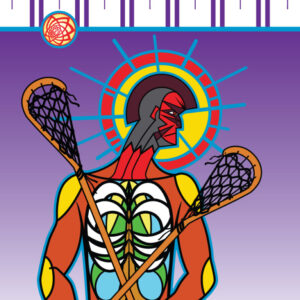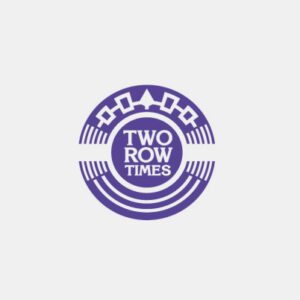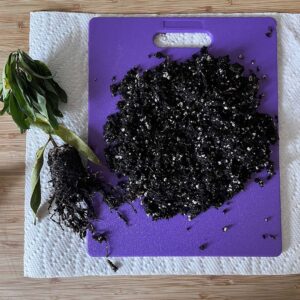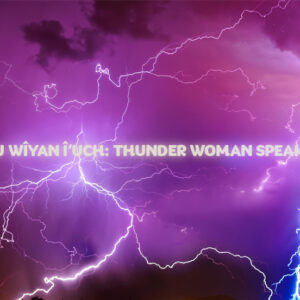
2019 opens with Indigenous peoples PROTECTING their territory while Justin Trudeau’s Canada continues to try to deceive the Canadian public about the real relations between his government and the original people of this land.
At Unist’oten, RCMP enforced an interim court order delivered December 14, 2018. Less than one month later, the RCMP are on site to uphold “the rule of law” as Trudeau puts it.
Canadians should know that Trudeau cherry picks when his government will uphold the “rule of law”. This is clear in the First Nation child welfare crisis with babies being removed from mothers in hospitals, with 90,000 documents not given to the Human Rights Tribunal in Cindy Blackstock’s case, and with the federal Liberals continuing to refuse to compile with a court ordered remedy.
At Unist’oten the RCMP were quick to deny access to reporters, in particular the Indigenous media outlet APTN. While Trudeau blusters about following the “rule of law”, it was his own father that advocated for the Charter that includes freedom of thought, opinion and expression which encompasses the press and their right to report in a “democracy”.
As Trudeau readies his party of Liberals for re-election his track record with the original people, the First Nations is as bleak and empty as his earlier campaign promises. Canadians remain blind to the fact that there are treaties between the original people and Great Britain that pre-date the origin of this settler state, called Canada.
From the Eastern door, there are agreements in place to work side by side in friendship where the original people, the First Nations or Indians can retain who they are – while sharing the land, water and resources with the newcomers.
With these various treaties (binding legal agreements) come specific terms consistent with mainstream contract law. As settler governments rise they alter the terms or subject them to interpretation that is primarily Whitethink race based, or for the nebulous “greater good”. In “aboriginal law” cases settled at the Supreme Court, the terminology is all legal speak without any inclusion of true indigenous laws except to say they are sui generis (of their own kind or stand alone laws). However, laws and cases before mainstream primarily white male or female judges are deliberated with their own limited contextual understanding. How is it that the Canadian judiciary is versed in the language, land and spiritual based laws of the original people? Moreover, if they are not versed in this understanding can they be deciding on “aboriginal” issues?
Unist’oten like the recent stand off in Standing Rock over pipeline construction has had to bear the brunt of a foreign court with settler laws deciding the fate of their collective ability to follow their ancient ways of life. Is this fair?
Additionally, having to leave or ignore their ancestral teachings, the original people or First Nations are expected to embrace Whitespeak solutions like reconciliation without really having any say other than the paternal special words and tactics (SWAT) promoted by the government of the day.
This is our reality Canada.
Things are not getting better between the state and the original people, the First Nations, the Indians.
In Unist’oten for the media sources that did get into the site, the questions asked pertained to why there are two different forms of leadership at Unist’oten? Premier Hogan used political mish mashing and threw in the word complexity while the Prime Minister would not address it but later said, we need to do better.
In a nutshell, non-native academics have shown that Indian agents from the Department of Indian Affairs threw out First Nation original governance systems. Indian agents preferred to work with the more malleable band members. With “democracy” and “the voting elections” brought into Canadian Indian reserves, by Indian Affairs, it is easy to see that an unchanging demographic will result in the biggest family or clan controlling the vote, the leadership, and by extension the reserve.
This is why there are occasional documents or incidents that surface about corruption or mismanagement on reserve. The missing part of the analysis is that Indian Affairs under the Federal government has created and maintains this systemic wrong at the expense of other band members and Canadians.
In British Colombia there are further obfuscating matters. Historic numbered treaties cover part but not all of British Colombia. Canada is the state that is working with the original people or First Nations in this province to establish a nation-to-nation relationship. Canada uses words like self-government and modern day treaties to define THIS relationship.
Cases like Nisga’a, Sparrow, Delgamuukw, and Haida came out of this province on land title, rights pertaining to fishing, land title and rights pending title agreement. It seems that Canada or British Colombia can’t negotiate title which is the bigger issue because: with definitive agreement on who “owns” the land, First Nations will receive all other “aboriginal” rights.
Hogan tried to state that hereditary clans of leadership of the Wet’suwet’en are the “emerging” governance models coming out in the clash at Unist’oten. Wrong. The hereditary leadership and their clans are the true governance system that existed for millennia pre-contact.
Once it became clear that mainstream media was zeroing in on two groups the Indian Act Band council consenters and the hereditary leadership that is saying they do not consent, this issue was somehow “settled”. LNG subsidiaries are driving through the Unist’oten camp undisturbed.
Trudeau also got a letter from the Committee on the Elimination of Racial Discrimination stating his proposed “framework” would infringe on Indigenous peoples rights to be protected at International law. Trudeau then shuffles his cabinet demoting his top “aboriginal” Minister from Justice to Veteran Affairs.
The Indians who fall under Trudeau whether on reserve on in his party must be cheerleaders for his skewed reconciliation package. If Canadians or media continue to see that consent is being manufactured through Federally controlled Indian Band leadership then the whole idea of reconciliation starts to unravel. Indigenous writers and media have been and will continue to write this perspective. Is Canada listening?









